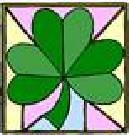|
|
||||
|
by Betty Jo Tucker  Imagine having a spirited conversation with a friendly Irish leprechaun. That gives you some idea how much fun a phone interview with Pat O’Connor, director of the movie version of Brian Friel’s acclaimed play, Dancing at Lughnasa, can be. Nevertheless, during our discussion, O’Connor’s great sense of humor failed to hide his serious reasons for wanting to helm this deeply moving story of five unmarried sisters in 1930s Ireland. “What I intended to do was to illuminate the human character and celebrate the best side of what we are,” he declared in his lilting Irish brogue. “By the end of this film, I wanted people to experience a sense of loss, but I also wanted them to feel uplifted because of the dignity and integrity of the characters they’ve come to care about.” And audiences do care about these women who gain strength and courage from each other despite their individual eccentricities and deplorable economic conditions. Regarding Oscar-winner Meryl Streep’s appearance as the oldest sister, O’Connor said, “She is a very intelligent actor. She knew this was an ensemble piece, not a star turn for her, and that’s the way she wanted it.” In addition to Streep, this talented director of such popular films as Circle of Friends, January Man and Cal assembled the best people possible (Sophie Thompson, Kathy Burke, Catherine McCormack, Brid Brennan, Michael Gambon), then rehearsed them together for two weeks so they would get to know each other. “I also got close to them,” he stated. “I always feel like an actor when working with actors, so they trust me. I don’t let technology get in the way of directing.” One of the film’s most exciting sequences shows all five sisters slowly joining in an exuberant display of Irish folkdancing. O’Connor explained, “I didn’t want to shoot it during the day or at night because of lighting considerations, so we did it during three consecutive twilights and used three cameras to get close shots and wider shots. I wanted to emphasize the passion of the dance, not the choreography. That’s why I told the women to forget the steps after they learned them and concentrate on the emotion they were feeling.” O’Connor added, “I want people to remember this film like I remember the movies of John Ford and John Huston.” What does he look for in the directing assignments he accepts? “Films about ordinary people. That’s my abiding interest in life,” he answered emphatically. Pat O’Connor, no ordinary director, has enriched moviegoers everywhere (not just the Irish) with Dancing at Lughnasa, an extraordinary tribute to the human spirit. (Excerpt from my 2001 life-at-the-movies memoir, CONFESSIONS OF A MOVIE ADDICT, published by Hats Off Books.)
|
||
|
© 2025 - ReelTalk Movie Reviews Website designed by Dot Pitch Studios, LLC |




